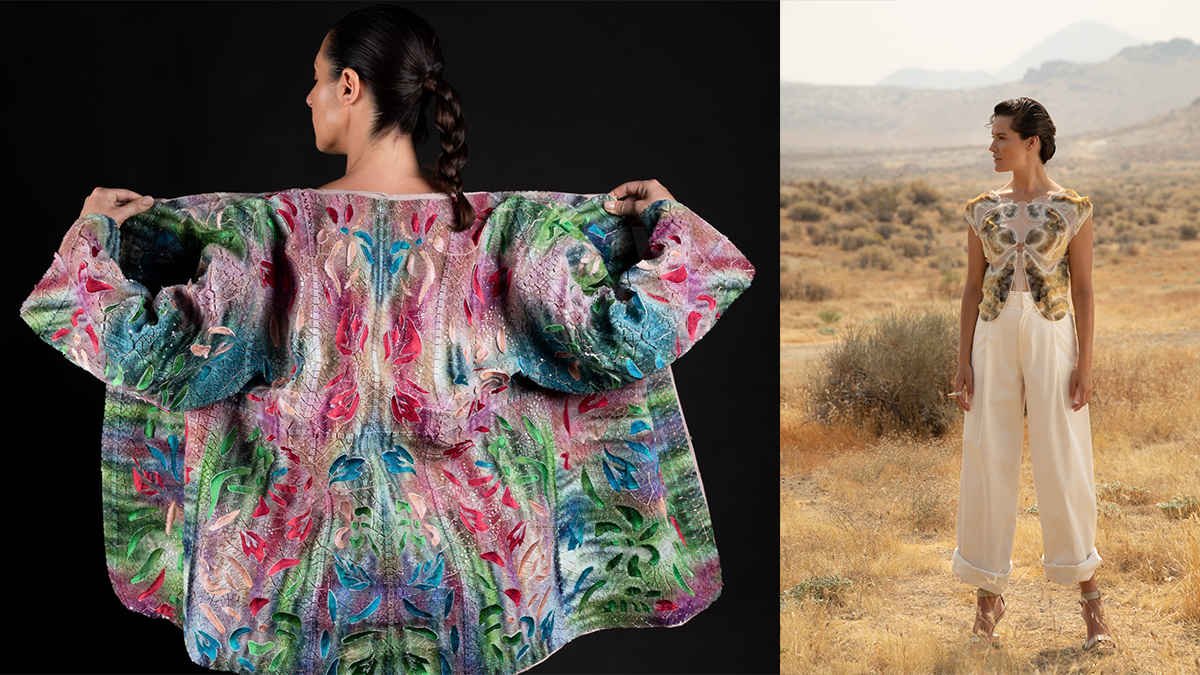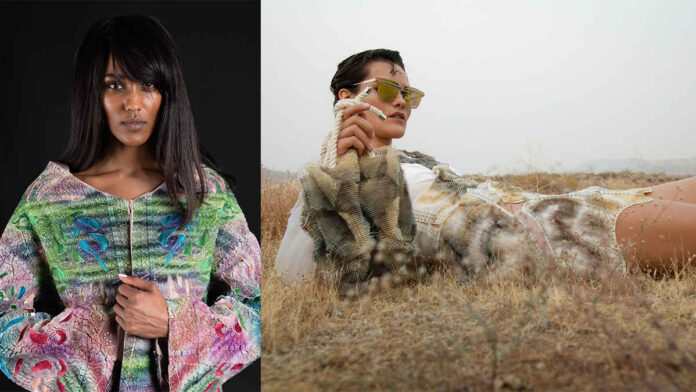One of the leading brands of additive manufacturing technology, Stratasys announced that they have carried out two collaborative works with esteemed fashion designers Julia Koerner and Ganit Goldstein. The works form part of Re-FREAM, a collaborative research project funded by the European Union bringing together artists, designers, engineers and scientists to co-explore the use of technology and 3D printing for the future of fashion. These works are living proofs of the possibility for localized manufacturing and mass customization, regarded by many as the future of fashion.
Since its unveiling at New York Fashion Week last autumn, the ability to 3D print directly onto fabric has drawn significant interest from the world of high-end fashion. Exemplified by the works of fashion designers threeASFOUR and Travis Fitch on NYFW’s catwalk, this technological milestone gave the world a preview of what fashion design could look like when combining the geometric and aesthetic freedom of 3D printing with the comfort of fabric. Since then, 3D printing leader, Stratasys has been working closely with several household fashion brands to optimize its novel PolyJet Technology to meet the needs of modern-day apparel fabrication and make customized fashion design commercially viable. The company has recently taken an important step in the fashion world by working with esteemed fashion designers Julia Koerner and Ganit Goldstein.
3D printed connectors were used for the first time in the assembly of textile
Julia Koerner introduced her latest collection ARID at the virtual ARS Electronica Festival. ARID amalgamated this research into a collection of 38 3D printed parts. These 3D printed parts can be combined to form a full-dress, or cascade into several different looks and combinations. The digital designs were 3D printed directly onto sustainable fabrics in vivid colours using Stratasys’ PolyJet Technology. While the fabric creates an enigmatic shimmer effect when the garment is in motion, it maintains the comfort and wearability of fabric garments. The collection also allows for the easy adaption of personalized sizes through modified 3D printed connectors, which are derived from 3D scans of the wearer. There is no sewing involved in the final assembly of the parts. Instead, all seams are connected with 3D printed joinery; which is the first time 3D printed connectors have ever been used in the assembly of textiles.

Direct-to-textile 3D printing will be a game changer for the fashion industry
Goldstein teamed up with Stratasys to achieve her mission of customized fashion design by combining craft methods; with direct-to-textile 3D printing to produce a Japanese-style dress. The designed kimono follows an algorithm that is composed on the 3D body scan; and translated to the print surface during the printing process. For the first time in 3D printed fashion, textiles can be leveraged as the skeleton of the garment. This allows for extra movement within the fabric; but also enables full gain between the capacity and material thickness that is printed on top of the fabric. This enables designers to bring unique designs to market that are not possible in any other way. It also challenges Stratasys to take the technology to places it has not been before; to support the emerging demand for direct-to-textile printing.
Goldstein is of the opinion that direct-to-textile 3D printing has the potential to be a game-changer for the fashion industry. Goldstein told that looking at the fashion world today; she wanted to introduce a new way of manufacturing and to move away from mass production to customized design. Saying that; “3D printing has always offered the potential to personalize design in ways not possible before; but to truly create a new way to manufacture requires a new kind of textile”; Goldstein stated that her goal was to create a new hybrid world of crafts and multi-colour 3D printing; connecting past, new and future techniques to evolve fashion design.
Explaining that in fashion, it’s important that continually optimizing and evolving to introduce new design forms, Goldenstein said; “During the past year, I experimented with numerous different fabrics and technologies to incorporate 3D printing within textiles. Achieving this milestone takes us away from 2D design and opens up a world of wearable 3D garments.”
